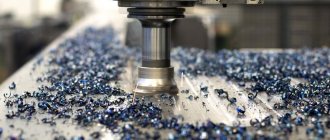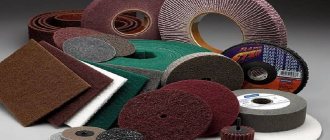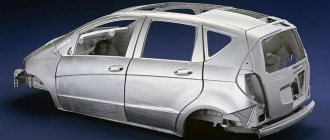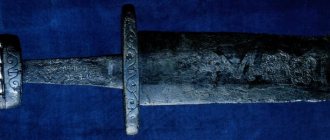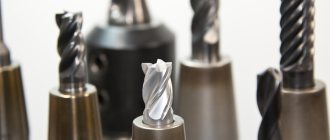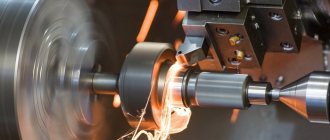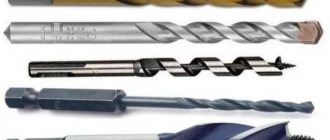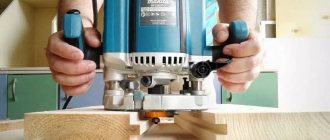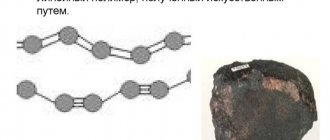Any construction-related activities involve the use of a wide range of tools and materials. In particular, special abrasive materials are used to carry out work on processing objects, for example, grinding. The latter are elements that are widely used for:
- grinding;
- sharpening;
- polishing
The above mentioned activities are not a final list. Abrasive materials also used for other mechanical processes designed to interact with surfaces.
A notable feature of the abrasive process is the impact of multiple microparticles on the surface being treated. Together, they remove the layer step by step, making the surface smooth and most suitable for further construction work.
abrasive materials are , show the types and types, as well as classifications of abrasive materials.
What is an abrasive material?
The above-mentioned elements are materials that have increased hardness in relation to other elements. Their main task is to ensure the correct machining of the required surfaces.
Abrasive materials are used to remove excess base layer. For this purpose, there are such mechanical processes as grinding, polishing, stripping, sharpening, cutting.
Interesting : An abrasive material is any element whose hardness exceeds that of the surface being treated. But still, certain types of abrasive materials .
The most common representatives of the latter are the following materials:
- products of the natural group - various types of silicon, diamonds, garnet;
- names of synthetic origin.
All elements that have bright abrasive features are used to make an abrasive tool - a grinding wheel. The main difference between the latter is the complete absence of a continuous cutting edge.
The functional tasks of the latter are performed by the connected granular surface. All abrasive substances are fastened together and the base using a connecting element. In this case, the marking number of a specific tool shows all the necessary information, namely:
- the material from which the grain is made, fraction;
- volume and internal composition of the ligament;
- structural features of the instrument body.
Characteristics such as wear resistance and resistance to elevated temperatures depend primarily on the hardness of the abrasive material .
Important : The most effective means for surface treatment at high speeds is an abrasive. It is the one that surpasses any tool steel in hardness and thanks to it you can work at high speed without damaging the cut.
Recommendations
- PALANNA. ENGINEERING CHEMISTRY
. Tata McGraw-Hill Education. ISBN 9781259081521. - "Glossary of Abrasive Engineering". Archived from the original dated April 2, 2007. Retrieved 2007-04-06.
- Grinding Stresses
, Grinding Wheel Institute, 1964 - "Care of the laminate surface." Archived from the original on 2007-02-24. Retrieved 2007-04-07.
- Nutrimetics, Honey-almond scrub
- "Occupational Safety and Health Answers: Metalworking Fluids." Retrieved 2007-04-06.
- "FEPA Structure". Archived from the original on March 5, 2007. Retrieved 2007-04-05.
Abrasive materials classification of silicates
Such elements are represented by chemical compounds of silicon dioxide and metal oxides. It is worth noting that in nature these substances are found in two forms: amorphous and crystalline.
Pumice and pumicite are formed by highly porous volcanic glass. They are most commonly used as cleaning powders and soaps. Garnets, a silicate group with a complex chemical composition, are also widely used in construction work.
Almadine is a material that is often used in the processing of solid wood. Therefore, the woodworking industry is his sphere. To work, almadine is crushed, sorted into fractions and applied to paper. The latter, together with the element, is used for finishing hardwood. A small amount of garnets is used for grinding stones and glass.
Washing pads
Dishwashing pads, like powdered cleaning products, are products with a long history of use. In the most widely used types, a ball of fine steel wire provides the cleaning action.
For chemical cleaning and as a polishing agent, steel wool can be filled with a cleaning mixture. Of course, the main ingredient is soap.
On metal surfaces in particular, soap and a metal pad can provide effective cleaning. And also give the surface a pleasant shine.
Some cleaning pads (sponges) are made of stainless materials. These can be materials such as copper mesh, stainless steel wire or nylon. And others are made of plastic coated with small abrasive particles. Therefore, these pads are not soaked in the cleaning mixture.
Additionally, there are some cleaning products that disinfect surfaces. They contain an antimicrobial agent to reduce the bacterial population. These bacteria live on contaminated surfaces. Such agents may include pine oil, quaternary ammonium compounds, or sodium hypochlorite. In addition, these products will be labeled as a “disinfectant” or “germ killer.” And in order to use this label, products must be approved by the Ministry of Health and the Center for State Sanitary and Epidemiological Surveillance.
For example, there are dishwashing sponges that consist of a cellulose sponge with a polyurethane base. As a result, these pads significantly reduce surface scratching.
Synthetic types of abrasives
There are a huge variety of artificial abrasive materials (AM). All of them are created to perform certain specific tasks. For example, normal electrocorundum has the following scope of use:
- 13A – circles for peeling are made. Moreover, the connection is organic. Such products are used for grinding steel parts;
- 14A - this classification is used for standard grinding. Grains are bound by both organic and inorganic substances;
- 15A - such components are notable for the use of a ceramic binder component and bakelite. Widely used for grinding at high speeds.
Zirconium electrocorundum 38A is widely used in combination with bakelite. The latter provides a strong connection. Therefore, such a tool can be effectively used for grinding metal workpieces at high speeds.
White electrocorundum also has several types of markings:
- 23A – an organic binding component is used. This tool does an excellent job with steel;
- 24A - this type of material is manufactured in the form of bars or finished circles. Suitable for processing hardened parts;
- 25A - tools made from this material are excellent for finishing steel elements at high speed. The products effectively cope with the tasks of grinding hard-to-cut steels.
Titanium chromium electrocorundum 91-92A is widely used for grinding and finishing metals in thick layers. The internal grains are bonded with a ceramic compound or bakelite.
Comparison of Cooper Slag and Quartz Sand
Of course, modern abrasive powder is more expensive than quartz sand. However, its performance characteristics are much better. For clarity, below we present to your attention a table comparing these two materials.
| Characteristics | Quartz sand | Cooper slag |
| Maximum surface cleanliness of the workpiece | Sa 2 | Sa 3 |
| Sanitary restrictions | May cause silicosis | No restrictions |
| Performance | 6 | 17 |
Abrasive materials: characteristics, basic properties
The grinding material is a complex product that has a wide range of technical properties. In particular, the following characteristics are worth noting:
- fractional indicator - this property determines the combination of abrasive grains into one system, the size of which does not exceed certain values;
- grain size - this indicator determines the main internal composition of the abrasive material, which is significant for a particular tool;
- uniformity indicator is a characteristic that determines the durability and cutting qualities of an abrasive material. This indicator also affects the surface roughness;
- hardness is one of the main characteristics of an abrasive material. It shows how tightly the grains are attached to each other. Hardness depends on properties such as the volume of the binder and the characteristics of the binder itself. The larger the bond, the higher the hardness.
The density of the structure provides a variety of technical characteristics. Tools with an open internal structure are characterized by efficient chip removal and resistance to elevated temperatures.
It is worth noting that such elements most effectively cope with the tasks of processing viscous metals or materials prone to burning or violating the integrity of the structure - the formation of cracks and other deformations.
Interesting : Less strong grain connections form remarkable tool wear patterns. When worn, the abrasive material begins to color. With a fragile grain and a strong bond, the former begins to crumble or wear away - worn-out areas appear on the abrasive material.
Liquid cleaners
Liquid cleaners are a paste or suspension of solid abrasive particles in a thickened liquid matrix. They also contain more surfactant and milder abrasives than some powder products. As a result, their abrasive action is usually more gentle than that of powders.
Abrasives: description, bundles
Do you want high-quality processing? Then choose an abrasive material that has the most effective bond. The properties of the latter directly affect the strength, hardness and specific use. The modes in which abrasive materials can be used also depend on the technical properties of the binder.
As mentioned above, there are organic and inorganic binding elements. The first ones include the following:
- vulcanite;
- bakelite;
- polyvinylformal compounds;
- glyphthalic and epoxy components.
The latter are notable for their silicate and magnesium elements. The most commonly used of the latter group is diamond and ceramics.
The distinctive properties of ceramic binder components are as follows:
- resistance to fire;
- resistance to moisture;
- Complete chemical neutrality - do not interact with chemicals of any origin.
The abrasive material with a ceramic bond has a reinforced profile, but reduced resistance to impact loads.
Bakelite-based ligaments are characterized by increased elasticity and resistance to any mechanical stress, including bending and impact. A wide variety of abrasive materials are made from such bonds.
However, bakelite ligaments also have negative sides, represented by the following nuances:
- susceptibility to alkaline-based chemicals;
- susceptibility to high temperatures;
- has reduced deformation resistance.
Magnesium and silicate binders are used much less frequently. This is due to the fact that such components are unstable to cooling and are fragile. But there is also a significant difference - they almost do not emit heat during use.
Volcanite ligaments have a diverse composition. They contain rubber and sulfur and undergo additional heat treatment. Such elements are characterized by increased elasticity, due to which it can be used for shaped and profile grinding.
Abrasive tools that use such a bond have a dense structure. This is their disadvantage - they heat up easily and quickly. This causes the grain to sag, so these tools are best used for fine grinding.
Reviews of powder manufacturers
Many Russian enterprises are developing sandblasting equipment and powder consumables for it. In particular, users respond positively to the product, noting the high-quality drying of the material, the absence of an oily factory film and foreign odors. High-quality nickel and cooper slag can be purchased from. Customers indicate that this manufacturer offers a special abrasive powder for concrete, metal and stone building structures that can be used several times with the same effectiveness. Consumers and products from Ryazan Instrumental, Inf-Abraziv, etc. are highly appreciated.
Abrasives: silicon carbide bond type, characteristics
This artificial binder is produced in a special oven. The process is carried out by heating sand and coke. As a result, the carbide is reduced and combines with carbon. The latter process is notable for the creation of silicon carbide, which has the appearance of intergrown crystals.
The latter are called carborundum. It is worth noting that silicon carbide is characterized by increased hardness, but at the same time it is brittle. Due to the latter drawback, it is not used for grinding steel.
However, silicon carbide is an indispensable tool when processing cemented carbides, cast iron, and metals that do not contain iron. Also suitable for grinding ceramics, leather, rubber.
During use, waste and pieces that fly off in different directions are not excluded. Therefore, before starting work, it is necessary to take all precautions and use personal protective equipment - helmets, goggles, gloves. This way you will protect yourself from emergencies.
Disinfection
First, some cleaning products disinfect surfaces. They contain an antimicrobial agent. Therefore, it reduces the population of bacteria living on contaminated surfaces.
Such agents may include pine oil, quaternary ammonium compounds, or sodium hypochlorite.
Price
The price of nickel slag and cooper slag is approximately the same. These powders cost about 3000-3500 rubles per ton. The price of quartz sand ranges from 800-900 rubles per ton. Diamond powder is, of course, very expensive. They sell it not in tons or even kilograms, but in grams. Its cost is 35-70 rubles per gram.
As you can see, abrasive powder is a very useful and in demand material. Its different types can be used both in industry and at home. It does not cause any harm to health, and its performance characteristics are simply remarkable.
